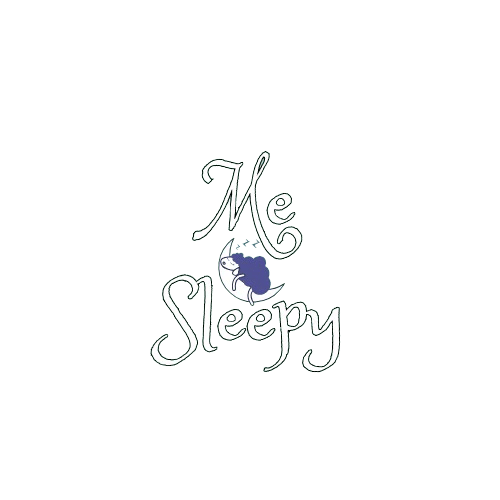Insomnia and Pupil Dynamics During Sleep
Fluctuations in Pupil Size During Sleep Indicate Varying Levels of Brain Activation
Our eyes may be closed during sleep, but beneath the eyelids, there is a dynamic interplay of brain activity that can be observed through the fluctuations in pupil size. Researchers from ETH Zurich, led by Caroline Lustenberger, Sarah Meissner, and Nicole Wenderoth, have discovered that pupil size changes constantly during sleep. These fluctuations, sometimes occurring within seconds and other times over several minutes, reflect varying levels of brain activation. This challenges the longstanding assumption that arousal levels remain consistently low during sleep. Instead, the brain appears to oscillate between higher and lower levels of activation, even in a state of rest. These findings, published in the journal *Nature Communications*, align with similar observations in rodent studies, suggesting a broader biological phenomenon.
These Changes Challenge the Assumption That Arousal Levels Are Consistently Low During Sleep, Impacting Insomnia Understanding
The discovery of fluctuating pupil sizes during sleep has significant implications for our understanding of insomnia. Previously, it was believed that the brain’s arousal levels were uniformly low during sleep, but these new insights reveal a more complex picture. The constant switching between different activation levels suggests that the brain remains active and responsive, even during rest. This understanding could reshape how we approach insomnia, as it highlights the potential for varying arousal levels to impact sleep quality and stability. By recognizing that the brain is not entirely at rest, researchers can explore new avenues for treating and managing insomnia, potentially leading to more effective interventions.
Innovative Methods for Studying Sleep and Insomnia
ETH Researchers Developed a Technique to Measure Pupil Changes with Eyes Open During Sleep
To delve deeper into the mysteries of sleep and insomnia, ETH researchers have pioneered an innovative technique to measure pupil changes while individuals sleep with their eyes open. This method involves using a special adhesive technique and a transparent plaster to keep the eyes open for several hours. Despite initial concerns that participants might struggle to sleep with open eyes, the dark room environment allowed most individuals to forget their eyes were open, enabling them to sleep naturally. This groundbreaking approach allows researchers to observe pupil dynamics as a proxy for brain activity, providing valuable insights into the underlying processes of sleep.
This Method Provides Insights into Brain Activity Related to Sleep Stages and Insomnia
The novel technique developed by ETH researchers offers a window into the brain’s activity during different sleep stages. By analyzing pupil dynamics, researchers can identify specific patterns of brain activity, such as sleep spindles and deep sleep waves, which are crucial for memory consolidation and sleep stability. Additionally, the study revealed that the brain’s response to external stimuli, like sounds, varies depending on the level of activation, as reflected in pupil size. This method not only enhances our understanding of sleep stages but also holds promise for uncovering the mechanisms behind insomnia. By linking pupil changes to brain activity, researchers can gain a deeper understanding of how insomnia affects sleep and explore potential interventions to improve sleep quality.

Brain Activation and Insomnia: The Role of the Locus Coeruleus
The Locus Coeruleus May Regulate Sleep Stages and Pupil Dynamics, Affecting Insomnia
The locus coeruleus, a small yet significant region in the brainstem, is emerging as a key player in regulating sleep stages and pupil dynamics. This area is known for its role in arousal and attention, and recent studies suggest it may also influence how our pupils behave during sleep. By modulating the levels of norepinephrine, a neurotransmitter associated with alertness, the locus coeruleus could be orchestrating the shifts in brain activation that are reflected in pupil size changes. Understanding this connection is crucial, as it could provide insights into why some individuals experience insomnia, characterized by disrupted sleep patterns and heightened arousal.
Future Studies Aim to Explore Its Influence on Sleep and Insomnia Through Medication
Researchers are keen to delve deeper into the role of the locus coeruleus in sleep and insomnia. Future studies are set to explore how manipulating this brain region with medication might influence sleep patterns and pupil dynamics. By targeting the locus coeruleus, scientists hope to uncover new treatment avenues for insomnia, potentially offering more precise interventions that address the root causes of sleep disturbances. This line of inquiry could lead to breakthroughs in how we understand and manage insomnia, paving the way for therapies that restore healthy sleep by modulating brain activation levels.
Diagnosing Insomnia and Sleep Disorders Through Pupil Dynamics
Pupil Changes Could Help Diagnose Insomnia and Other Sleep Disorders by Indicating Arousal System Dysfunctions
The potential of pupil dynamics as a diagnostic tool for sleep disorders is an exciting frontier in sleep medicine. By analyzing how pupils change during sleep, researchers can gain insights into the functioning of the arousal system. Abnormalities in pupil behavior might indicate dysfunctions that are characteristic of insomnia and other sleep-related conditions. This approach could revolutionize how we diagnose these disorders, offering a non-invasive method to assess the underlying neurological processes that contribute to disrupted sleep.
Potential Applications Include Monitoring in Hospitals and Improving Insomnia Treatment Strategies
The practical applications of using pupil dynamics in clinical settings are vast. Hospitals could employ this technique to monitor patients with sleep disorders, providing real-time data on their arousal levels and sleep stages. This information could be invaluable for tailoring treatment strategies to individual needs, enhancing the effectiveness of interventions. Moreover, by integrating pupil dynamics into routine diagnostics, healthcare providers could improve the accuracy of insomnia diagnoses, leading to more targeted and successful treatment plans. As research progresses, the hope is that these innovations will lead to better outcomes for those struggling with sleep disorders.
For more insights into sleep and insomnia, check out our Insomnia Blog and explore our Sleep Sound Playlists to aid in achieving restful sleep.
Sources:https://www.sciencedaily.com/releases/2025/03/250305135152.htm


